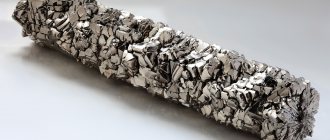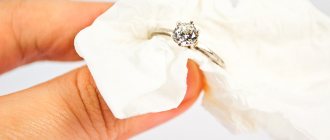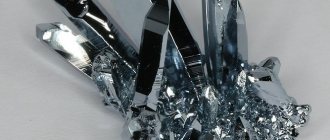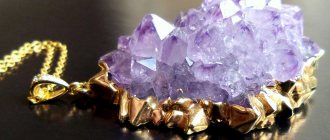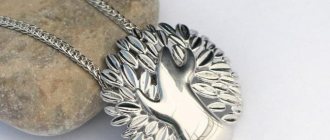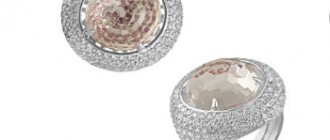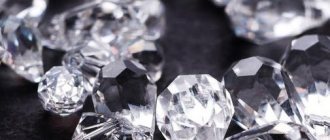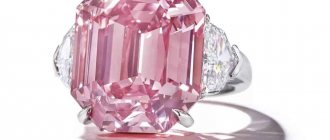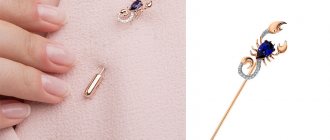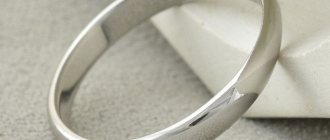In the periodic table, the chemical element titanium is designated as Ti (Titanium) and is located in a secondary subgroup of group IV, in the 4th period under atomic number 22. It is a silvery-white solid metal that is part of a large number of minerals. You can buy titanium on our website.
Titanium was discovered at the end of the 18th century by chemists from England and Germany, William Gregor and Martin Klaproth, independently of each other with a six-year difference. The name of the element was given by Martin Klaproth in honor of the ancient Greek characters of the titans (huge, strong, immortal creatures). As it turned out, the name became prophetic, but it took humanity more than 150 years to become familiar with all the properties of titanium. Only three decades later it was possible to obtain the first sample of titanium metal. At that time, it was practically not used due to its fragility. In 1925, after a series of experiments, using the iodide method, chemists Van Arkel and De Boer extracted pure titanium.
Due to the valuable properties of the metal, engineers and designers immediately paid attention to it. It was a real breakthrough. In 1940, Kroll developed a magnesium-thermal method for obtaining titanium from ore. This method is still relevant today.
Physical and mechanical properties
Titanium is a fairly refractory metal. Its melting point is 1668±3°C. In this indicator, it is inferior to such metals as tantalum, tungsten, rhenium, niobium, molybdenum, tantalum, zirconium. Titanium is a paramagnetic metal. In a magnetic field it is not magnetized, but is not pushed out of it. Image 2 Titanium has a low density (4.5 g/cm³) and high strength (up to 140 kg/mm²). These properties practically do not change at high temperatures. It is more than 1.5 times heavier than aluminum (2.7 g/cm³), but 1.5 times lighter than iron (7.8 g/cm³). In terms of mechanical properties, titanium is much superior to these metals. In terms of strength, titanium and its alloys are on par with many grades of alloy steel.
Titanium is as resistant to corrosion as platinum. The metal has excellent resistance to cavitation conditions. Air bubbles formed in a liquid medium during active movement of a titanium part practically do not destroy it.
It is a durable metal that can resist fracture and plastic deformation. It is 12 times harder than aluminum and 4 times harder than copper and iron. Another important indicator is the yield strength. As this indicator increases, the resistance of titanium parts to operational loads improves.
In alloys with certain metals (especially nickel and hydrogen), titanium is able to “remember” the shape of the product created at a certain temperature. Such a product can then be deformed and it will retain this position for a long time. If the product is heated to the temperature at which it was made, then the product will take its original shape. This property is called “memory”.
The thermal conductivity of titanium is relatively low and the coefficient of linear expansion is correspondingly low. It follows from this that metal is a poor conductor of electricity and heat. But at low temperatures it is a superconductor of electricity, which allows it to transmit energy over considerable distances. Titanium also has high electrical resistance. Pure titanium metal is subject to various types of cold and hot processing. It can be drawn and wired, forged, rolled into strips, sheets and foil with a thickness of up to 0.01 mm. The following types of rolled products are made from titanium: titanium strip , titanium wire , titanium pipes , titanium bushings , titanium circle , titanium rod .
Heat treatment of titanium alloys
To improve performance, titanium alloys are subjected to heat treatment. This process becomes significantly more complicated due to the fact that the restructuring of the crystal lattice of the surface layer takes place at temperatures above 500 degrees Celsius. For VT5 and VT6-S alloys, annealing is often carried out. The holding time may vary significantly, depending on the thickness of the workpiece and other linear dimensions.
Parts made from VT14 must withstand temperatures of up to 400 degrees Celsius at the time of use. That is why heat treatment involves hardening followed by aging. In this case, hardening requires heating the environment to a temperature of about 900 degrees Celsius, while aging involves exposure to an environment with a temperature of 500 degrees Celsius for more than 12 hours.
Induction heating methods allow a wide variety of heat treatment processes to be carried out. Examples include annealing, aging, normalization, and so on. Specific heat treatment modes are selected depending on what performance characteristics need to be achieved.
Chemical properties
Pure titanium is a chemically active element. Due to the fact that a dense protective film is formed on its surface, the metal is highly resistant to corrosion. It does not undergo oxidation in air, in salty sea water, and does not change in many aggressive chemical environments (for example: diluted and concentrated nitric acid, aqua regia). At high temperatures, titanium interacts with reagents much more actively. In air at a temperature of 1200°C, it ignites. When ignited, the metal gives off a bright glow. An active reaction also occurs with nitrogen, with the formation of a yellow-brown nitride film on the surface of titanium.
Reactions with hydrochloric and sulfuric acids at room temperature are weak, but when heated, the metal dissolves intensively. As a result of the reaction, lower chlorides and monosulfate are formed. Weak interactions also occur with phosphoric and nitric acids. The metal reacts with halogens. The reaction with chlorine occurs at 300°C. An active reaction with hydrogen occurs at a temperature slightly above room temperature. Titanium actively absorbs hydrogen. 1 g of titanium can absorb up to 400 cm³ of hydrogen. Heated metal decomposes carbon dioxide and water vapor. Interaction with water vapor occurs at temperatures above 800°C. As a result of the reaction, metal oxide is formed and hydrogen evaporates. At higher temperatures, hot titanium absorbs carbon dioxide and forms carbide and oxide.
Structural high-strength vehicles
Ultimate strength σв > 1000 MPa for grades VT6, VT14, VT3-1, VT22, VT23M. They are characterized by satisfactory weldability with all types of welding. These alloys have high corrosion resistance in the annealed and thermally strengthened states in a humid atmosphere, sea water, and many other aggressive environments.
In addition, applications will always require improvements in their performance properties through new thermal and thermomechanical treatments. Among the most promising are the VT23M. It combines high strength and crack resistance of both the base material and welded joints. In many ways it surpasses foreign analogues in properties and cost due to the reduced content of molybdenum and vanadium, the exclusion of tin and zirconium. All types of rolled, forged, pressed semi-finished products, as well as monolithic, welded and brazed structures are made from it.
Methods of obtaining
Titanium is one of the most abundant elements on Earth. Its content in the bowels of the planet by mass is 0.57%. The highest concentration of the metal is observed in the “basalt shell” (0.9%), in granitic rocks (0.23%) and in ultramafic rocks (0.03%). There are about 70 titanium minerals in which it is found in the form of titanic acid or dioxide. The main minerals of titanium ores are: ilmenite, anatase, rutile, brookite, loparite, leucoxene, perovskite and sphene. The world's main titanium producers are the UK, USA, France, Japan, Canada, Italy, Spain and Belgium. There are several ways to obtain titanium. All of them are used in practice and are quite effective.
Magnesium-thermal process.
Ore containing titanium is mined and processed into dioxide, which is slowly and at very high temperatures subjected to chlorination. Chlorination is carried out in a carbon environment. The titanium chloride formed as a result of the reaction is then reduced with magnesium. The resulting metal is heated in vacuum equipment at high temperature. As a result, magnesium and magnesium chloride evaporate, leaving titanium with many pores and voids. Titanium sponge is melted down to produce high-quality metal.
Calcium hydride method.
First, titanium hydride is obtained, and then it is separated into its components: titanium and hydrogen. The process occurs in an airless space at high temperatures. Calcium oxide is formed, which is washed with weak acids. Calcium hydride and magnesium-thermal methods are commonly used on an industrial scale. These methods make it possible to obtain a significant amount of titanium in a short period of time, with minimal monetary costs.
Electrolysis method.
Titanium chloride or dioxide is exposed to high current. As a result, the compounds decompose.
Iodide method.
Titanium dioxide reacts with iodine vapor. Next, titanium iodide is exposed to high temperature, resulting in titanium. This method is the most effective, but also the most expensive. Titanium is obtained of very high purity without impurities or additives.
Production Features
Titanium production is a complex, time-consuming and expensive process. The element forms chemical compounds and solid solutions with many metals, and therefore requires special conditions when created.
Among the most common raw materials for titanium production are titanium-magnetite ores, from which ilmenite concentrate is obtained. The process takes several stages:
- obtaining titanium slag by reduction smelting. The concentrate and reducing agent are loaded into the electric arc furnace. They heat up to 1650 degrees Celsius. Cast iron is formed from reduced and carburized iron, and titanium oxide turns into slag, which contains 82-90% TiO2;
- obtaining titanium tetrachloride by chlorination. It is carried out in continuous mine chlorinators or in salt chlorinators. Chlorine gas acts on TiO2 at temperatures of 700–900 °C;
- production of titanium (sponge, powder) by reduction from tetrachloride. For this, magnesium or sodium is used.
Application of titanium
Due to its good anti-corrosion properties, titanium is used for the manufacture of chemical equipment. The high heat resistance of the metal and its alloys facilitates its use in modern technology. Titanium alloys are an excellent material for aircraft, rocket and shipbuilding.
Monuments are made from titanium. And bells made of this metal are known for their extraordinary and very beautiful sound. Titanium dioxide is a component of some medications, for example: ointments against skin diseases. Metal compounds with nickel, aluminum and carbon are also in great demand.
Titanium and its alloys have found application in such areas as the chemical and food industries, non-ferrous metallurgy, electronics, nuclear engineering, power engineering, and electroplating. Weapons, armor plates, surgical instruments and implants, irrigation systems, sports equipment and even jewelry are made from titanium and its alloys. During the nitriding process, a golden film is formed on the surface of the metal, which is not inferior in beauty even to real gold.
Marking features
In accordance with GOST 19807-91, they are designated by the letters VT, OT, PT (V, O, P - identifier of the development organization or manufacturer, T - titanium) and numbers indicating the serial number of the alloy depending on the chemical composition.
B - VIAM titanium - All-Russian Research Institute of Aviation Materials (VIAM, Moscow);
O - Experimental titanium - a joint development of VIAM and the Verkhnyaya Salda Metallurgical Production Association (VSMPO, Verkhnyaya Salda, Sverdlovsk region);
P - Prometheus titanium - Central Research Institute of Structural Materials "Prometheus" (St. Petersburg).
In addition to the general division, Ti alloys are given other special designations. They correspond to the composition and parameters:
- technical grades VT1-1, VT1-0, VT1-00 contain titanium from 99.3 to 99.9%;
- titanium sponges TG-90, TG-110, TG-150, TG-120, TG-Tv, TG-130, TG-100;
- foundry - VT20L, VT21L, VT14L, VT9L, VT6L, VT1L, VT3-1L, VT5L.
In some cases, an additional letter is placed after the serial number of the alloy:
U - improved,
M - modified,
And - special purpose,
B - with a predominance of vanadium as an alloying element.
Main qualities of titanium jewelry
Fans of titanium jewelry appreciate this metal for its several special qualities:
- Beautiful appearance. Rings made of titanium are no less beautiful than those made of silver and gold. They are made both simple - only from metal, and with decoration - with various stones (including diamonds), inserts, coatings, and so on. They can be glossy or matte, as well as various colors - blue, black, purple and others.
- Relatively low price. Titanium rings are cheaper than gold rings. The metal itself is inexpensive, but to process it you need to have expensive equipment. This forms a large part of the price of the products.
- Strength. Titanium wedding rings are more resistant to physical and chemical (for example, household chemicals) influences than gold or silver ones. The durability factor is important here, because people usually wear these rings almost without taking them off.
- Hypoallergenic. Titanium does not oxidize, does not rust, and does not react with any substances while on the human body. People who are allergic to silver, gold and alloys can afford to wear titanium jewelry.
- Ease. Since titanium is a very light metal, even large jewelry made from it is relatively light in weight.
general characteristics
Titanium alloys have increased reactivity with tool steels, in particular with high-speed steels. Temperatures exceeding 500 °C are sufficient to initiate the reaction. At elevated temperatures, diffusion of titanium atoms into the carbide tool material occurs and their subsequent chemical reaction with the carbon present in the tool. The result is an intermediate layer of titanium carbide (TiC) that bonds firmly to both surfaces. The formation of a saturated setting zone minimizes the diffusion wear mechanism.
The main characteristics that make titanium in demand in many areas of economic activity are:
- Excellent strength-to-weight ratio, providing cost-effective designs used in the aerospace and petrochemical industries.
- Corrosion resistance, especially sought after in the aerospace, chemical, petrochemical and architectural industries.
- Biological compatibility of interest to the medical industry.
Titanium-based compositions have an attractive appearance. This property is used in monumental and applied art.
Reserves and production
Main ores: ilmenite (FeTiO3), rutile (TiO2), titanite (CaTiSiO5).
As of 2002, 90% of mined titanium was used to produce titanium dioxide TiO2. World production of titanium dioxide was 4.5 million tons per year. Confirmed reserves of titanium dioxide (excluding Russia) are about 800 million tons. As of 2006, according to the US Geological Survey, in terms of titanium dioxide and excluding Russia, reserves of ilmenite ores amount to 603-673 million tons, and rutile ores - 49, 7-52.7 million tons. Thus, at the current rate of production, the world's proven reserves of titanium (excluding Russia) will last for more than 150 years.
Russia has the second largest reserves of titanium in the world, after China. The mineral resource base of titanium in Russia consists of 20 deposits (of which 11 are primary and 9 alluvial), fairly evenly distributed throughout the country. The largest of the explored deposits (Yaregskoye) is located 25 km from the city of Ukhta (Komi Republic). The deposit's reserves are estimated at 2 billion tons of ore with an average titanium dioxide content of about 10%.
The world's largest titanium producer is Russian.

